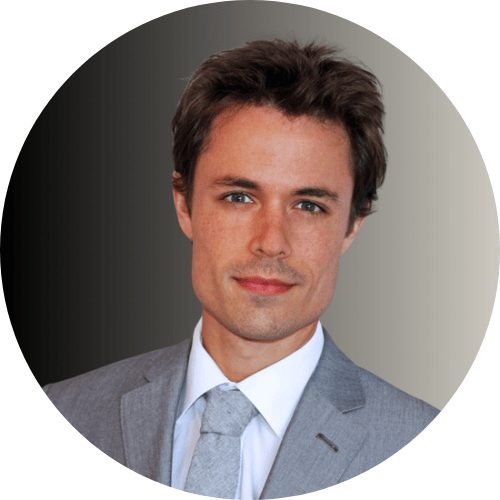- The Wealth Expedition
- Posts
- Call of the Wild
Call of the Wild
What does it mean to live intentionally? Let's learn from the writings of two Davids: the ancient King David and the 19th century Henry David Thoreau.

Our weekly newsletter features the following sections:
First time reading? Subscribe for weekly content here.
“I went to the woods because I wished to live deliberately, to front only the essential facts of life, and see if I could not learn what it had to teach, and not, when I came to die, discover that I had not lived.”
-Henry David Thoreau

NEWS
What Happened Last Week
Headline inflation (CPI) showed 3% over the last twelve months, with core inflation (excluding volatile food and energy prices) at 3.3%.
Goods have been experiencing deflation for the last couple of years, whereas services have been driving the high inflation. Both appear to be trending toward stabilization.
Month-over-month inflation, however, has seen an acceleration that disappointed expectations.
Stock markets came close to an all-time high Thursday and Friday after several companies reported higher earnings than expected.
President Trump announced his intention to implement reciprocal tariffs on countries which charge their own tariffs on imports from the US.
Consumer spending on imported goods last year made up 11.2% of GDP.
How I See It
Inflation still remains the big concern that seems to keep markets from becoming euphoric in their expectations.
While actual and potential tariffs are touted as inflationary, I think this is a solid reason why markets can actually continue their positive trend.
The scare of tariffs, and their actual results in real life, I think are mismatched.
First, imported goods only made up 11.2% of GDP last year in the US. Even if President Trump follows through on the tariff talk (assuming the respective countries aren’t willing to come to terms), then the rise in prices is a relatively small makeup of the total economy.
Beyond that, companies first tend to reorganize supply chains or cut costs elsewhere in order to attempt to compete on price.
Finally, Milton Friedman convincingly proposed that inflation is “always and everywhere a monetary phenomenon.” Sustained inflation (excluding short-term supply/demand disruptions) largely results from the growth rate of the money supply, which has been 3.9% as of Dec 2024, below the average 7%+ of the past 65 years.
In conclusion, I believe the stock market is high, but high markets can continue for years before a bear market hits. The continued uncertainty surrounding the impact of tariffs and high interest rates, I think, gives room for reality to positively surprise expectations little by little throughout the year.
And I hope that means markets are up moderately from start to finish of 2025.

PARADIGM SHIFT
Call of the Wild
When Henry David Thoreau built his cabin in the woods, in which he lived for two full years, his intention was to experiment with a simple way of living independently.
The inspiration for this sojourning away from civilization was his observation of so many impoverished workers who appeared to be spending their every waking minute attempting to survive another day.
While working conditions have significantly improved since his day nearly two centuries ago, there are still moments when we ask ourselves, “Is the sacrifice I give to this job really worth what I’m getting out of it?”
In the end, the question really is: “What am I doing this for?”
Often, there is a good answer. Hopefully you are doing the work primarily because you feel a passion and purpose in what you do. And secondarily, the material comforts offered as benefits and salary allow you to devote time and energy to your other interests outside of work.
But this is not the case for everyone. There are times in most of our lives when we ask ourselves whether it makes sense to continue in the same direction.
If anyone had a stressful and difficult job, it was the ancient King David. From his writings, he felt so often in danger for his own life, betrayed by friends, ambushed by enemies, all the while doing his best to take the high road and rule his nation with wisdom.
If anyone could relate to Thoreau’s interest in the simple life of the wilderness, it was David. Consider when he wrote:
“Oh, that I had wings like a dove!
I would fly away and be at rest;
Yes, I would wander far away;
I would lodge in the wilderness; Selah
I would hurry to find a shelter
From the raging wind and tempest.”
-Psalm 55:6-8
I suspect everyone has moments like this when they feel the need to just get away. When they dream of moving away from all the noise and the clamor of society, and becoming more independent. It’s a timeless theme.
Yet interestingly, neither David nor Thoreau did any such thing permanently. King David had a nation to lead. Thoreau returned from his two years in the woods because, in the end, he preferred contact with society.
Three lessons I think we can learn from the combination of these two authors:
From time immemorial, the desire to escape from the bustle of city life into a simpler, more independent lifestyle has been a recurring theme.
Thoreau proved that it can be done, and that “by working about six weeks in a year, I could meet all the expenses of living” (Walden).
The key is to balance purpose (that is, responsibility) with intentional living.
Both David and Thoreau lived with intention, in completely different ways. But each fulfilled in life a great purpose by what they accomplished.
In our own lives, we can implement their lessons by shouldering responsibility in pursuit of a worthwhile purpose while remaining intentional about why we do what we do.


FINANCIAL TOOL
High Yield Bonds
When smaller, unproven companies accept loans through the sale of bonds, investors require a higher payout because of the higher risk of default.
These bonds are below investment grade (BB+ and under) and pay a significant premium above the risk-free Treasury rate.
When markets are doing well and investors are optimistic, this premium might be less. For example, investors might only require 2.5% above the Treasury yield if they think the risk of default is lower.
But when markets are full of uncertainty, investors may turn pessimistic and perceive the risk of default as being higher. In this case, they might require something like 5% or more above the Treasury yield.
This difference between the Treasury yield and the bond yield is called the yield spread.
The spread narrows during good markets and widens during volatile markets.
This happens for investment grade bonds as well, but in a much less dramatic fashion, because their spread range is much narrower.
What does this mean for your portfolio?
This means that high yield bond prices act more similarly to stock than to bonds.
Here’s why.
When stock returns improve, the yield spread narrows. This means newly issued high-yield bonds don’t have to pay quite as high a premium above the risk-free rate. So, if you own a high yield bond paying 10%, and suddenly similar bonds are being issued to pay only 8%, then you can sell your bond for a higher value.
Just like any other bond, there is an inverse relationship between interest rates and bond prices.
High yield bonds depend mainly on investors’ perception of default risk, meaning the bond price often goes up when stocks are up and down when stocks are down. This might even be regardless of whether the US Treasury rate has changed at all.
Investment grade bonds, on the other hand, depend more on what US Treasury rates do or are expected to do. So when stocks are down, investment grade bonds, most of the time, tend to be up except in rare circumstances like 2022.
So where do high yield bonds fit in a portfolio?
Well, it’s not usually smart to just hold one or two. If you choose to hold any at all, a fund of high yield bonds is going to be important to diversify the risk. But they’re usually best kept as a small portion of the overall portfolio.
They don’t offer as much diversification from stocks as investment grade bonds do, and yet they don’t offer full stock-like returns either. It’s almost like a hybrid risk/reward ratio between that of bonds and that of stocks. It occupies the middle ground.
So high yield bonds can be an important part of a total portfolio. If you’re more of a risk-seeker, these might be used as part of your bond allocation. If you’re more conservative, you may choose to avoid these or keep them to a bare minimum.

HERE’S HOW I CAN HELP
COURSE 2 OF 3 IS AVAILABLE!
I am in the process of creating the third and final in-depth digital course that, together with the other two, will comprehensively make you a master of your financial destiny.
The second of three courses is now available:
This course will lead you step-by-step toward developing your escape plan into a life of comprehensive wealth: time, flexibility, purpose and money.
Walk through the lessons and accompanying action steps to create an extraordinary life change today which culminates in a bridge to financial independence in the near future.
Each lesson builds upon the last, covering these main topics:
Master high-impact budgeting techniques to create a surplus today
Develop a plan to become debt-free in record time
Raise your salary this year
Use tax strategy to fast-track your goals
Bridge your way to entrepreneurship
This is a learn-at-your-own-pace course with 7+ hours of content that will set you on course to achieve your dream life well in advance of retirement age using simple but powerful habits of finance.


I’d love to hear from you. Let me know what you’d like to see in upcoming newsletters, articles, or a digital course at Contact Us - The Wealth Expedition.

